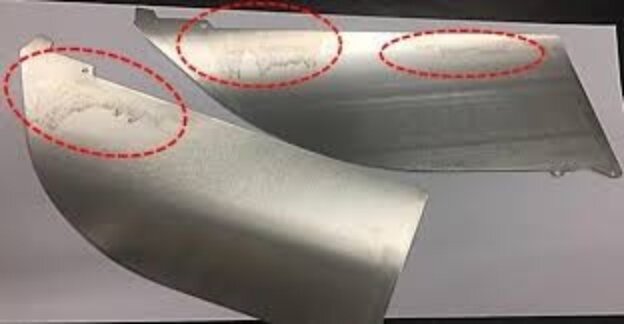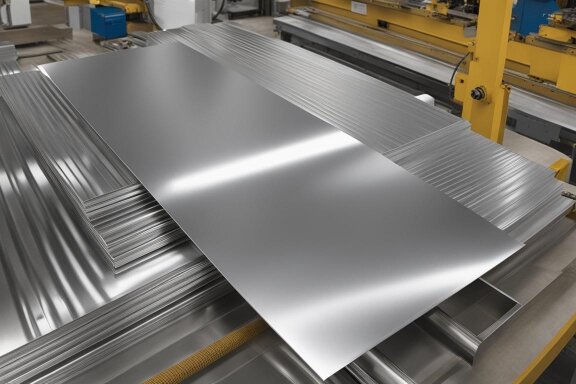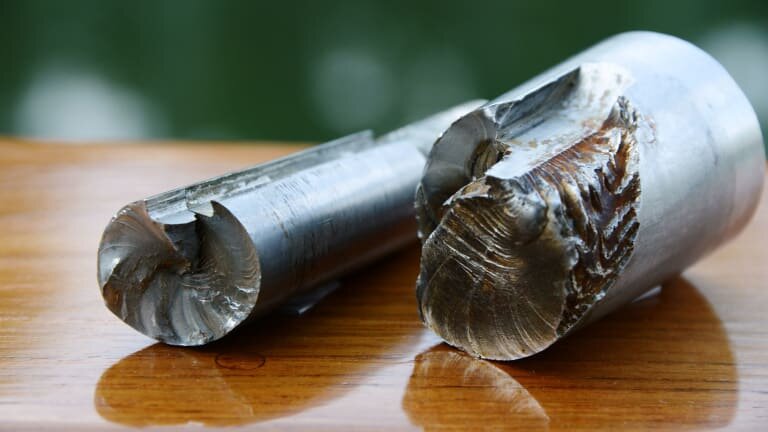Can titanium be welded? Perhaps you’ve heard it’s challenging or even impossible. Many fabricators shy away from this remarkable metal due to its unique properties. But here’s the truth: welding titanium is not only possible, it’s a crucial skill in many high-tech industries.
Titanium welding requires specific techniques and equipment. Use a tungsten inert gas (TIG) welder with pure argon shielding gas. Clean the metal thoroughly and work in a draft-free area. Maintain a short arc length and move quickly to prevent overheating. Choose the suitable filler metal and adjust your welding parameters for optimal results.
Ready to learn more about welding titanium? Let’s explore the key steps and best practices to help you achieve perfect welds every time.
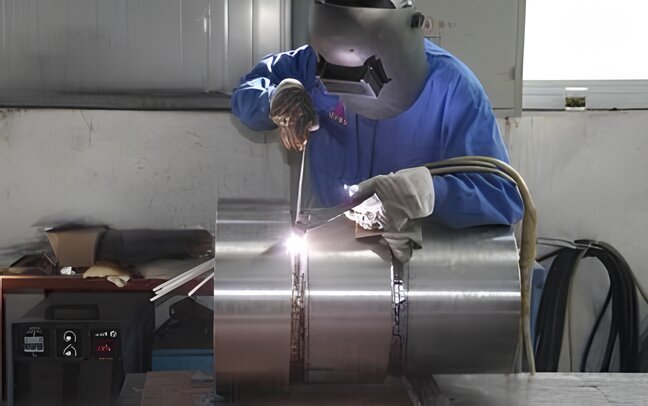
Challenges in Welding Titanium
Common Issues Faced by Welders
Welding titanium presents unique challenges. Oxidation is a primary concern, as titanium reacts quickly with oxygen at high temperatures. This can lead to brittle welds and reduced strength.
Warping and distortion are also common problems. Titanium’s low thermal conductivity causes heat to concentrate in the weld area. This can result in significant deformation if not correctly managed.
Contamination is another issue welders face. Even small amounts of impurities can weaken the weld. Dust, oil, or other metals can compromise the integrity of your titanium project.
Importance of Understanding Titanium’s Behavior During Welding
Knowing how titanium behaves is crucial for successful welding. Titanium expands less than steel when heated, but it retains heat longer. This affects your welding strategy.
Titanium forms a protective oxide layer when exposed to air. While beneficial for corrosion resistance, this layer can interfere with welding. Proper shielding gas techniques are essential to prevent this.
Understanding these properties helps you adjust your welding parameters. It allows you to anticipate potential issues and take preventive measures. This knowledge is critical to achieving high-quality titanium welds.
Pre-Welding Preparations
Safety Precautions
Essential Safety Gear
Protect yourself with proper gear. Wear a welding helmet with a high-quality lens. Use leather gloves and a flame-resistant jacket. Steel-toed boots offer added protection.
Handling Titanium Safely
Work in a well-ventilated area. Titanium fumes can be harmful. Avoid breathing them in. Keep a fire extinguisher nearby as a precaution.
Equipment and Tooling Requirements
Selecting the Right Welding Machine
Choose a TIG welder with AC/DC capability. Look for models with high-frequency start and pulse options. These features help control heat input and arc stability.
Tools Specific to Titanium Welding
Invest in pure tungsten electrodes. Use ceramic nozzles and cups for better gas coverage. A gas lens can improve shielding gas flow.
Material Preparation
Cleaning Titanium Surfaces
Clean thoroughly before welding. Use acetone or alcohol to remove oils. Stainless steel wire brushes work well for mechanical cleaning. Avoid contamination from other metals.
Proper Fit-Up Techniques for Titanium Welds
Ensure tight, consistent gaps between pieces. Use clamps or tack welds to maintain alignment. Proper fit-up reduces the risk of oxidation and improves weld quality.
Titanium Welding Techniques
TIG (GTAW) Welding
Why TIG is Preferred for Titanium
TIG welding offers precise control over heat input. It produces clean, high-quality welds. TIG is ideal for thin titanium sheets and critical applications.
Step-by-Step TIG Welding Process
- Set up your machine with a DC electrode negative.
- Use pure argon gas for shielding.
- Start with a small tungsten electrode, about 1/16 inch.
- Strike the arc and maintain a short arc length.
- Move steadily, keeping the heat concentrated.
- Add filler metal if needed, matching the base metal.
MIG (GMAW) Welding
When to Use MIG for Titanium
MIG welding suits thicker titanium pieces. It’s faster than TIG for larger projects. Use MIG when speed is crucial, and appearance is less critical.
MIG Welding Techniques for Titanium
Use a push technique for better gas coverage. Keep wire stick-out short, about 3/8 inch. Adjust your settings for a stable, quiet arc. Weld in short bursts to manage heat input.
Laser Welding
Laser Welding Technology Overview
Laser welding uses a focused beam of light. It creates a narrow, deep weld with minimal heat-affected zone. This technique is fast and precise.
Applications of Laser Welding for Titanium
Aerospace and medical industries favor laser welding. It’s excellent for thin sections and intricate parts. Laser welding produces consistent, high-strength joints.
Electron Beam Welding
High-Precision Welding with Electron Beam
Electron beam welding occurs in a vacuum. It uses a focused beam of electrons to melt the metal. This method creates deep, narrow welds with minimal distortion.
Benefits and Challenges of Using Electron Beam for Titanium
Benefits include exceptional precision and strength. Challenges involve high equipment costs and complex setups. It’s best for specialized, high-value titanium components.
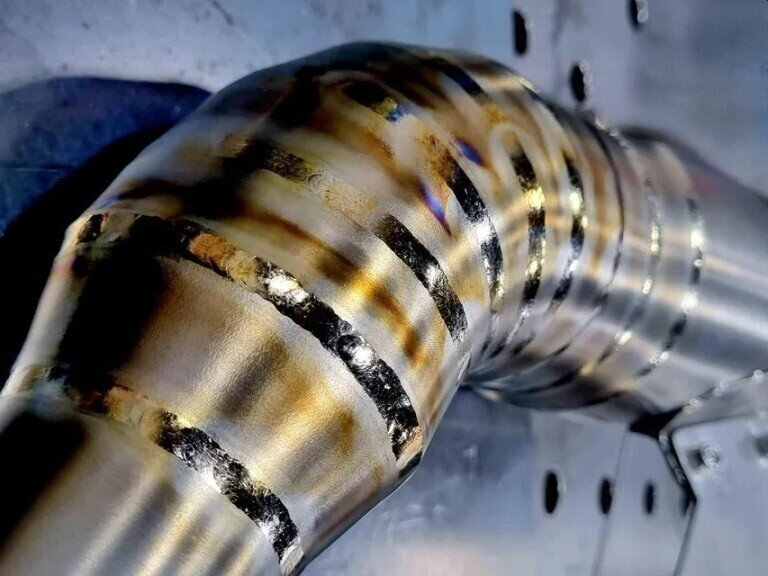
Titanium Welding Environment Control
Importance of Inert Gas Shielding
Role of Argon and Helium in Titanium Welding
Argon is the primary shielding gas for titanium. It provides excellent arc stability and weld quality. Helium can be added to increase heat input and penetration.
Argon creates a protective barrier around the weld pool. This prevents oxygen contamination. Helium enhances arc characteristics for thicker materials.
How to Maintain a Contamination-Free Environment
Use a clean, draft-free workspace. Cover nearby air vents. Keep doors closed to prevent air currents. Use welding curtains to create a controlled area.
Clean all tools and surfaces before welding. Avoid using tools on other metals. Dedicate specific tools for titanium work only.
Managing Heat Input
Controlling Heat to Prevent Distortion and Cracking
Use pulsed welding techniques. This alternates between high and low currents. It reduces overall heat input while maintaining penetration.
Employ strategic tack welding. This helps control the warpage during the primary welding process. Space tack welds evenly to distribute heat.
Techniques for Consistent Heat Management
Practice proper travel speed. Moving too slowly can cause excessive heat buildup. Fastening can lead to a lack of fusion.
Use a water-cooled torch for longer welds. This helps maintain consistent temperature. Adjust amperage based on material thickness and joint design.
Purging Techniques
Inside and Outside Purging
Inside purging is crucial for pipe and tube welding. It prevents oxidation on the root side of the weld. Use specialized purging equipment for consistent results.
Outside purging involves creating a gas “tent” around the weld area. This provides additional protection against atmospheric contamination.
Purging Equipment and Methods
Use trailing shields for added protection. These attach to your torch and extend gas coverage. Employ purge dams for pipe welding to isolate the weld zone.
Monitor oxygen levels with an oxygen analyzer. Aim for less than 50 ppm of oxygen in the purge area. Allow sufficient time for purging before starting the weld.
Post-Welding Considerations
Inspecting Titanium Welds
Common Defects in Titanium Welds and How to Identify Them
Look for discoloration. Blue or straw colors indicate contamination. Check for porosity using a magnifying glass. Cracks may appear as fine lines on the weld surface.
Incomplete fusion shows as gaps between the weld and base metal. Undercutting appears as grooves along the weld edges. These defects weaken the weld strength.
Nondestructive Testing Methods for Titanium Welds
Use X-ray inspection for internal defects. This reveals hidden porosity or lack of fusion. Ultrasonic testing helps detect subsurface flaws in thicker materials.
Dye penetrant testing highlights surface cracks. It’s simple and effective for many applications. For critical parts, consider helium leak testing for airtight welds.
Post-Weld Heat Treatment
Necessity of Heat Treatment
Heat treatment relieves internal stresses. It improves flexibility and reduces the risk of cracking. Some titanium alloys require heat treatment for optimal properties.
Proper heat treatment can enhance corrosion resistance. It also helps maintain dimensional stability in complex parts.
Techniques for Stress Relief in Titanium
Use vacuum or inert gas furnaces for heat treatment. This prevents surface contamination. Follow precise temperature and time guidelines for your specific alloy.
Slow cooling is often preferred. It minimizes residual stresses. Rapid cooling may be necessary for some alloys to achieve the desired properties.
Cleaning and Finishing Titanium Welds
Removing Oxidation and Contaminants
Use a dedicated stainless steel wire brush. Remove any discoloration or oxide layer. For stubborn oxides, consider light grinding or chemical cleaning.
Avoid cross-contamination. Use separate tools for titanium. Clean the weld area with acetone or alcohol after mechanical cleaning.
Polishing and Surface Finishing Techniques
Start with fine-grit abrasives. Progress to finer grits for a smooth finish. Use non-metallic abrasives to prevent contamination.
For mirror finishes, use polishing compounds designed for titanium. Electropolishing can achieve a high-quality surface for medical or aerospace applications.
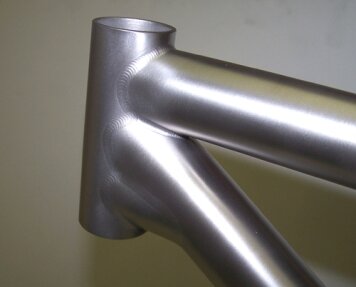
Titanium Welding: Common Issues and Troubleshooting
Porosity in Titanium Welds
Contamination often causes porosity. Clean your workpiece thoroughly before welding. Remove all oils, greases, and moisture.
Inadequate gas coverage leads to porosity. Check for gas leaks in your system. Increase gas flow rate if needed. Use a gas lens for better shielding.
Improper filler metal can create pores. Ensure your filler matches the base metal. Store filler rods in a clean, dry place.
Rapid cooling traps gas bubbles. Maintain proper travel speed. Consider preheating for thicker sections to slow cooling.
Cracking and Embrittlement
Hydrogen embrittlement is a significant concern. Use only dry shielding gas. Keep your work area free of moisture.
Excessive heat input causes cracking. Control your amperage and travel speed. Use pulsed welding to manage heat.
Stress cracking occurs due to rapid cooling. Allow for slow, controlled cooling after welding. Consider post-weld heat treatment for stress relief.
Improper joint design leads to cracks. Ensure proper fit-up and joint preparation. Use the correct weld sequence to minimize stress.
Oxidation and Discoloration
How to Avoid Contamination and Ensure Clean Welds
Maintain proper gas shielding. Extend gas flow before and after welding. Use backup gas for complete protection.
Work in a clean, controlled environment. Avoid drafts and air currents. Use welding curtains to isolate your work area.
Clean your base metal and filler rod. Use dedicated titanium brushes and tools. Avoid cross-contamination from other metals.
How To Detect Heavy Oxidation in Titanium
Check weld color. Silver or straw color is good. Blue, purple, or gray indicates oxidation.
Feel the weld surface. Smooth welds are typically clean. Rough or powdery surfaces suggest oxidation.
Use a low-power microscope. Look for a dull, scaly appearance. This indicates heavy oxidation requiring removal and rewelding.
5 Welding Tips for Titanium Welding
Avoid contamination at all costs
Cleanliness is crucial. Use dedicated tools for titanium. Clean your workspace thoroughly. Wear clean gloves to prevent oil transfer from your hands.
Wipe surfaces with acetone before welding. Store titanium materials separately. Avoid any contact with other metals or contaminants.
Keep your heat settings low
Titanium is sensitive to heat. Start with a lower amperage than you’d use for steel. Increase gradually until you achieve proper penetration.
Use pulse welding to control heat input. This alternates between high and low currents. It reduces overall heat while maintaining weld quality.
Get Good Gas Coverage
Use pure argon gas for shielding. Ensure your gas lines are leak-free. Employ a gas lens for better coverage.
Extend post-flow gas time. This protects the weld as it cools. Use trailing shields for additional protection on more significant welds.
Use A TIG Machine With The Right Features
Choose a machine with AC/DC capability. Look for high-frequency start options. This helps initiate the arc without contact.
Seek machines with adjustable pulse settings. These allow fine-tuning of heat input. Digital displays help maintain precise control.
Keep a narrow heat setting
Focus heat on a small area. This prevents distortion in the surrounding metal. Use a small-diameter tungsten electrode.
Practice your technique to maintain a consistent arc length. Move steadily to avoid overheating in any one spot. Adjust travel speed to manage heat concentration.
Conclusion
Welding titanium requires attention to detail, proper preparation, and specific techniques. By following these guidelines, you can achieve high-quality, durable welds. Remember to prioritize cleanliness, control heat input, and maintain proper gas shielding.
Contact us today to discover how we can achieve exceptional results for your projects. You can also request a quote, and we’ll work with you to find a customized, budget-friendly solution!
FAQs
Why is titanium so difficult to weld?
Titanium poses welding challenges due to its high reactivity with oxygen at elevated temperatures. It’s sensitive to contamination and has low thermal conductivity, which can lead to potential distortion. Titanium also tends to embrittle if not shielded adequately during welding.
Can you weld titanium with MIG wire?
Yes, it is possible to weld titanium using MIG (GMAW), but some special considerations are required. You’ll need to use specialized titanium MIG wire and ensure proper shielding gas, typically pure argon. Employing pulsed MIG can provide better control over the welding process. Maintaining clean conditions is crucial to prevent contamination.
Do I Need Special Equipment for Titanium Welding?
Titanium welding often requires specialized equipment to ensure the best results. A TIG welding machine with AC/DC capability is typically necessary. You’ll also need a high-purity argon gas supply to provide proper shielding. Dedicated titanium filler rods are essential for maintaining the integrity of the weld. Trailing shields or purge devices help extend gas coverage and protect the weld as it cools.
Hey, I'm Kevin Lee

For the past 10 years, I’ve been immersed in various forms of sheet metal fabrication, sharing cool insights here from my experiences across diverse workshops.
Get in touch

Kevin Lee
I have over ten years of professional experience in sheet metal fabrication, specializing in laser cutting, bending, welding, and surface treatment techniques. As the Technical Director at Shengen, I am committed to solving complex manufacturing challenges and driving innovation and quality in each project.


